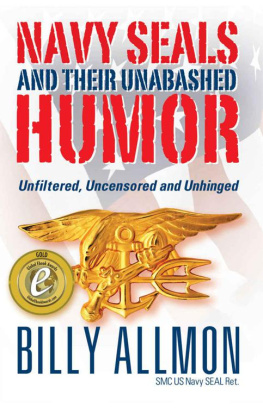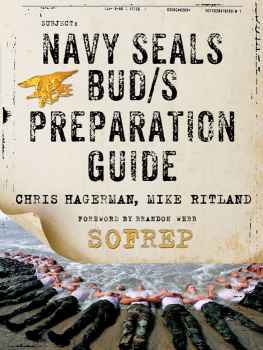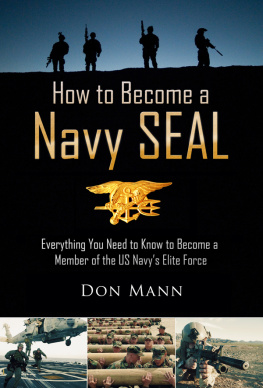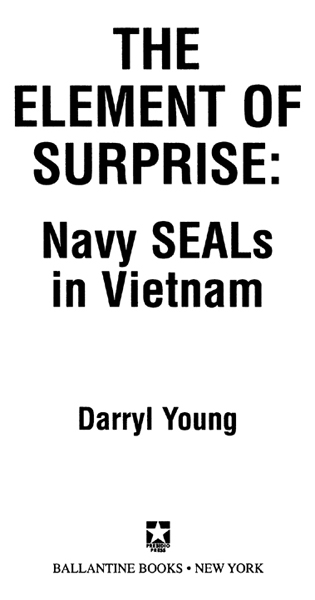Juliett Platoon worked as a team, the way we were trained. One for all and all for one. All the men of Juliett Platoon have their own stories to tell. Some may be more accurate, some may not be. This is my story as seen through my eyes from my position within the platoon.
I owe my getting back to the States alive to the professionalism of the officers and enlisted men of Juliett Platoon. What a lucky man I am to be alive.
All rights reserved.
Published in the United States by Presidio Press, an imprint of The Random House Publishing Group, a division of Random House, Inc., New York, and simultaneously in Canada by Random House of Canada Limited, Toronto.
Presidio Press and colophon are trademarks of Random House, Inc.
DEDICATION
To my wife of sixteen years, Sandy; to my son, Jamie; to my daughter, Jenniferthe most valuable people in my life.
To my mother and fatherthanks for saving all my letters, movies, photos, notes, maps, and my UDT swim fins.
To the officers and enlisted men of Juliett Platoon and all Navy SEALs and Underwater Demolition Team members who served, lived, and died in Vietnam.
ACKNOWLEDGMENTS
I am deeply appreciative and grateful for the support and help of the following people. Without them this book would have been a hard obstacle to complete.
UDT/SEAL teammates: Nicolas E. Walsh, M.D. Timothy R. Reeves, Barry E. Strausbaugh, Lloyd Doc Schrier, John A. Shannon, Lt. Ronald R. Weber, Frank Fronk Schroeder, John Passyka, Sr. Chief Petty Officer Jim Berta, Michael Emerson, Greg Burham, Tom Boyhan, Craig Banfield, Dan Blocker, Brian Curle, Pete Remillard, Gary Abe Abrahamson, and Darryl Willie Wilson.
I would also like to thank Lt. Commander (ret.) John Keuter for information and support, John Jadwinski for a history of the light SEAL support craft, Roger Joy for friendship and support, Pete Schroeder for marine recon information, and Jack Green for literary coaching. Thanks also to Verna Brown, typist, James Reeves, author of MEKONG, Owen Lock, Editor, Ivy Books, and Ellen Key Harris, editorial assistant.
Contents

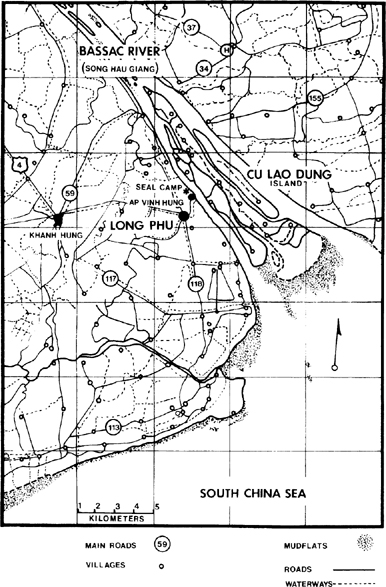
Courage is
almost a contradiction in terms.
It means a strong desire to live
taking the form of a readiness to die.
G.A. C HESTERSON
I arrived at Coronado Naval Amphibious Base in San Diego California in August of 1969 as a brand new naval ensign. Like the rest of the officers and men in my Underwater Demolition Team (UDT) training class, I wanted to become part of the best of the best, the United States Navy SEAL (Sea Air Land) Teams. For officers and chief petty officers, UDT training was preceded by a two-week indoctrination course which introduced us to the handling of the inflatable boat, small (IBS), tried to prepare our bodies for the coming physical assaultwhich no one could truly prepare forand to provide leadership during the stress of training to come. Each day started with two hours of calisthenics, followed by IBS work, running in the sand, or ocean swims. The two weeks passed quickly and soon all 204 of us, officers and enlisted, were assembled as a training class, Class 54.
No one is forced to undergo UDT training; all must volunteer. Prior to assignment to the training, each of us had been screened to insure that we were physically, mentally, and psychologically ready to withstand the onslaught of the next six months. Even with the screening, historically about three-fourths of those who start UDT training fail to complete it. To quit, an individual merely had to throw his helmet down and say, I quit. With that, he was quickly removed from the training class and returned to the unit from which he came with no stigma attached.
The training brochure stated, UDT training requires extremely high personal commitment and dedication to complete the course of instruction. If there was ever an understatement, that was it. We soon realized the only easy day was yesterday. The minimum physical requirements for completion of training were to run the obstacle course in 10 minutes, swim 2 miles in the ocean with fins in 70 minutes, run 4 miles in 30 minutes, and 14 miles in 110 minutes on the beach in fatigues and combat boots.
Underwater demolition training was supervised by Naval Special Warfare officers but carried out by Special Warfare enlisted personnel who had ample combat experience in Vietnam and other wars. Among their other duties the enlisted instructors were to insure that the officers who completed UDT training were competent and that they themselves would be willing to serve under them in a combat environment. This was one of the unique aspects of the UDT and SEAL team training: officers were trained with the enlisted, by the enlisted, and were expected to perform in a manner superior to the enlisted personnel. Unlike other military units, where the officers were trained separately or were present merely to provide administrative support, the prospective UDT/SEAL officer went through every hurdle with the enlisted personnel. The officers were harassed, intimidated, and made examples of with apparent maliciousness. The instructors looked for even the slightest hint of resentment or anger, as these reactions have no place during a combat mission. A SEAL officer had to earn the right to command, it was not given to him.
The first four weeks of UDT/SEAL training were spent in physical conditioning, two hours in calisthenics every day, running on the beach in the sand wearing combat boots and fatigues for hours every day, and rowing the inflatable boat, small (IBS) with seven man crews of six enlisted and one officer. Every morning started with a spit and polish inspection with the most minute defect resulting in the offending individuals hitting the bay, which meant jumping into 55-degree water fully clothed. This resulted in a lot of brass and boots to polish for the next day. If too many trainees failed the inspection, the entire class hit the bay, which was a common event. We ran everyplace we went. We ran over from the Bachelor Officers Quarters in the morning, ran in the training area, ran to lunch, ran everywhere. My jungle boots became custom molded to the bottoms of my feet.
The morning calisthenics were grueling: hundreds of sit-ups, push-ups, miles of duck walks, deep knee-bends, and more pull-ups than one could count. When the enlisted instructors thought you werent doing the pull-ups satisfactorily, you repeated them all. When they thought you werent meeting the requirements for sit-ups, theyd start off by standing on your stomach and if that didnt improve things, they resorted to the side of a boot into your ribs. However, the harassment was always two-sided; you could always verbalize your thoughtsunless the instructors could figure out who had said what, then youd duck walk for miles.


